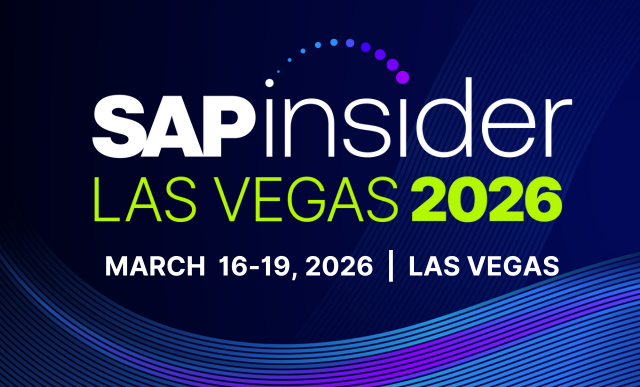SAP SRM
Filter By
Browse By
- SAP Analytics and AI
- SAP Application Development and Integration
- All SAP Application Development and Integration
- SAP ABAP
- SAP ABAP Development Tools
- SAP ABAP Test Cockpit
- SAP API Management
- SAP BAPI
- SAP Basis
- SAP BRF
- SAP Business Application Studio
- SAP CMS
- SAP Design Studio
- SAP Development Tools
- SAP DevOps
- SAP EAI
- SAP EDI
- SAP Extension Suite
- SAP Fiori
- SAP Fiori Elements
- SAP Integration Suite
- SAP Low Code Application Development
- SAP Low Code Automation
- SAP Netweaver
- SAP Release Management
- SAP UI5
- SAP Web Application Server
- SAP Web IDE
- SAP Business Process Management
- SAP Center of Excellence
- SAP CIO
- SAP Customer Experience
- SAP Data and Data Management
- All SAP Data and Data Management
- SAP BW
- SAP BW/4HANA
- SAP Crystal Reports
- SAP Data Archiving
- SAP Data Center
- SAP Data Governance
- SAP Data Integration
- SAP Data Migration
- SAP Data Quality
- SAP Data Services
- SAP Data Strategy
- SAP Data Visualization
- SAP Data Warehouse Cloud
- SAP DMS
- SAP Document Control
- SAP EIM
- SAP ETL
- SAP ETL Tools
- SAP HANA
- SAP HANA Administration
- SAP HANA Deployment Infrastructure
- SAP HANA Studio
- SAP Master Data
- SAP Master Data Governance
- SAP MDM
- SAP Enterprise Architect
- SAP Enterprise Asset Management
- SAP ERP
- SAP Finance
- All SAP Finance
- SAP Accounting
- SAP AR AP
- SAP Asset Accounting
- SAP Billing Systems
- SAP BPC
- SAP BRIM
- SAP Cash Management
- SAP Central Finance
- SAP Controlling
- SAP COPA
- SAP Cost Center Accounting
- SAP Currency Risk
- SAP e-invoicing
- SAP FICO
- SAP Finance Automation
- SAP Advanced Financial Closing
- SAP Financial Consolidation
- SAP Financial Planning
- SAP FX Risk
- SAP General Ledger
- SAP Global Tax Management
- SAP Hyperion
- SAP Order to Cash
- SAP Payment Processing
- SAP Profitability Analysis
- SAP Rebate Management
- SAP S/4HANA Finance
- SAP SWIFT Compliance
- SAP Treasury Management
- SAP Universal Journal
- SAP Governance Risk and Compliance
- SAP Human Capital Management
- SAP Intelligent Technologies
- SAP Platform and Technology
- All SAP Platform and Technology
- SAP Business Technology Platform
- SAP Cloud
- SAP Cloud Connector
- SAP Cloud Integration Platform
- SAP Cloud Migration
- SAP Cloud Platform
- SAP Cloud Providers
- SAP Cloud Strategy
- SAP Digital Signature
- SAP Container Platform
- SAP HANA Enterprise Cloud
- SAP Digital Asset Management
- SAP Smart Forms
- SAP HEC
- SAP Digital Integration Hub
- SAP Hyperscalers
- SAP Infrastructure
- SAP Messaging
- SAP Quality and Testing
- SAP Security
- SAP Spend Management
- SAP Supply Chain Management
- All SAP Supply Chain Management
- SAP APO
- SAP Asset Management
- SAP Business Network
- SAP Digital Manufacturing Cloud
- SAP Digital Twin
- SAP EWM
- SAP IBP
- SAP Inventory Management
- SAP Label Printing
- SAP Logistics
- SAP Manufacturing
- SAP Manufacturing Automation
- SAP MES
- SAP MII
- SAP MM
- SAP MRO
- SAP MRP
- SAP Order Management
- SAP Plant Maintenance
- SAP PLM
- SAP Production Planning
- SAP S&OP
- SAP SD
- SAP SPM
- SAP Supply Chain Planning
- SAP Track and Trace
- SAP Transportation Management
- SAP System Administration
SAP Spend Management: SRM
When an organization has many suppliers, it is critical to manage them efficiently and build long-term relationships. Establishing long-term relationships allows for more ideas and feedback to flow freely, streamlined operations, cost reductions, and improved customer service.
SRM Defined
SRM stands for Supplier Relationship Management, which falls under supply chain management. The main purpose is to establish two-way relationships between organizations and suppliers via a web-based platform. It covers innovative methods to coordinate business processes with suppliers, so they are more productive. SRM is integrated with the vendor’s systems for greater efficiencies with interactions. With SAP Supplier Relationship Management (SAP SRM), organizations can examine purchasing history, shorten procurement cycles, and collaborate with partners all in real time.
SAP Spend Management: SRM
When an organization has many suppliers, it is critical to manage them efficiently and build long-term relationships. Establishing long-term relationships allows for more ideas and feedback to flow freely, streamlined operations, cost reductions, and improved customer service.
SRM Defined
SRM stands for Supplier Relationship Management, which falls under supply chain management. The main purpose is to establish two-way relationships between organizations and suppliers via a web-based platform. It covers innovative methods to coordinate business processes with suppliers, so they are more productive. SRM is integrated with the vendor’s systems for greater efficiencies with interactions. With SAP Supplier Relationship Management (SAP SRM), organizations can examine purchasing history, shorten procurement cycles, and collaborate with partners all in real time.
Key Capabilities are:
- Operational Procurement: Catalog management, invoice creation, processing purchase orders, and shopping cart management.
- Strategy Sourcing: RFx and bids management and centralized sourcing.
- Operational Contract Management: Centrally managing supplier contracts.
- Supplier Self-Service: Self-service capabilities for suppliers.
- Services Procurement: Managing services for procurement.
- Operational Reporting: With workforce mobility option.
The significance of SRM is that it automates and streamlines the processes for materials that are ordered frequently, optimizing procurement. It allows organizations to maintain long-term relationships with the right suppliers who have proven historically to be reliable partners. SRM supports supplier information management, compliance, risk management, and performance management.
Benefits of SRM
- Coordinates business operations
- Automates workflows
- Standardizes goods and services acquisitions
It is important to note the difference between SRM and procurement. SRM focuses on contracts and relationships, while procurement focuses on purchases, like ordering, invoicing, or paying. SAP has a cloud-based B2B sourcing and procurement application called Ariba where buyers and suppliers can do business in a networked structure. It provides capabilities such as supplier management, strategic sourcing, supply chain, procurement, services procurement and external workforce, and selling and fulfillment.
Vendor partners offering SRM include apexanalytix, SAP, smartShift.
Key Considerations for SAPinsiders are:
- Increase Supplier Compliance with Sustainable Business Networks. Discover why accurate records of supplier compliance in procurement and ongoing supplier management activities is an important activity.
- Simplify Supplier Qualification with SAP Supplier Lifecyle Management. Learn the functionality of how to simplify and foster supplier relationships, by reading this article.
- Understanding the Key Aspect of Supply Chain Visibility. Kumar Singh, SAPinsider describes what supply chain visibility is, how organizations struggle, and explains one method to kickstart your approach.
149 results
-

- SAP Finance
 Premium
Premium
The Guide for the Perplexed: The Different Sourcing and Purchasing Tools in SAP S/4HANA
Click Here to View the Session Deck. SAP S/4HANA has multiple sourcing and procurement tools and each may be suitable for different business situations. Do not miss this opportunity to discuss the different tools (SAP Ariba, SAP SRM, SAP Sourcing, SAP ERP Outline Agreement, SAP ERP Purchasing) and their best-fit business situations, so that they...…
-

apexanalytix Debuts Cyber Risk Solution to Prevent Supplier Data Loss and Operational Disruption
Reading time: 4 mins
In mid-2024, apexanalytix launched its Cyber Risk solution, designed to enhance supplier risk management by automatically assessing supplier cybersecurity, monitoring dark web threats, and providing real-time incident responses, addressing the rising complexities and financial impacts of cyberattacks on supply chains.
-

 Premium
Premium
Link Defaults, Limits, and Other Values Directly to Security Roles
Reading time: 12 mins
Personalization data functionality introduced with SAP R/3 Release 4.6C enables you to link and maintain default settings, values, limits, and other data directly against security roles and user masters. Key Concept Even with all the customizing options available in SAP systems, every so often you need to store a little extra data to default settings...…
-
-

 Premium
Premium
A Handy Guide to Project System Business Content in BW
Reading time: 90 mins
Learn which tables the Business Content extractors for PS use to get their data. This will help you achieve more accurate extractions. Project System (PS) is one of the more frequently used modules of SAP R/3, and not one of the most difficult modules from which to extract data into BW. Still, it is useful...…
-

 Premium
Premium
Configure an Enterprise Business Role Concept Using SAP Access Control 5.3 and Position-Based Security
Reading time: 9 mins
ManagementLearn how to configure SAP Access Control 5.3 to use an enterprise role concept across all SAP ABAP components, Java components, and LDAP user group provisioning. Key Concept An enterprise business role is a super composite role that encompasses roles or profiles across all your SAP ABAP and Java environments. As more organizations make the...…
-

 Premium
Premium
Take Advantage of Third-Party Process Customization
Reading time: 14 mins
Learn about third-party processes using sales and distribution, materials management, and financial accounting. Discover the main customization settings to carry out in the system from the sales, procurement, and financial points of view. By applying the standard settings, companies reduce the risk of adopting custom solutions and also follow best practices to manage third-party business...…
-

 Premium
Premium
Streamline Invoice Processes and Improve Customer Relationships by Implementing SAP SD Retroactive Billing
Reading time: 14 mins
Implementing retroactive billing, available to you in SAP ERP Central Component 6.0, addresses the issue of changing pricing after invoices have already been sent. Learn the configuration steps needed to run retro-billing across modules in your SAP ERP system. Maintain your good customer relationships using this accurate, consistent business process. Key Concept Companies typically have...…
-
-

 Premium
Premium
Implement the Appropriate Contract Manufacturing Solution
Reading time: 12 mins
Decide the appropriate solution for contract manufacturing in an SAP system based on your business needs. Learn about the possible options available across the main logistics modules. Gain details about the main master data and transactional data needed to implement the manual and subcontracting solutions. Key Concept Contract manufacturing (CM) is the process by which...…
-

 Premium
Premium
Guide Your Implementation Project with SAP Solution Manager
Reading time: 26 mins
ManagerLearn how you can best use SAP Solution Manager 7.0 (formerly called SAP Solution Manager 4.0) functionality for an SAP implementation project. Specifically, read about the details of the Implementation Roadmap and the activities that should be performed in each implementation stage using tools found in SAP Solution Manager. Key Concept SAP Solution Manager provides...…
-

 Premium
Premium
Manage Complex External Manufacturing Operations with a Full Contract Manufacturing Solution in SAP
Reading time: 22 mins
See how to implement a full contract manufacturing (CM) solution in an SAP system. Gain details about the main master and transactional data needed to implement this solution along with the most important customizing details from a logistics point of view. Key Concept An outline agreement (contract or vendor scheduling agreement) is set up once...…
Become a Member
Unlimited access to thousands of resources for SAP-specific expertise that can only be found here.
Become a Partner
Access exclusive SAP insights, expert marketing strategies, and high-value services including research reports, webinars, and buyers' guides, all designed to boost your campaign ROI by up to 50% within the SAP ecosystem.
Upcoming Events
Related Vendors
Your request has been successfully sent


